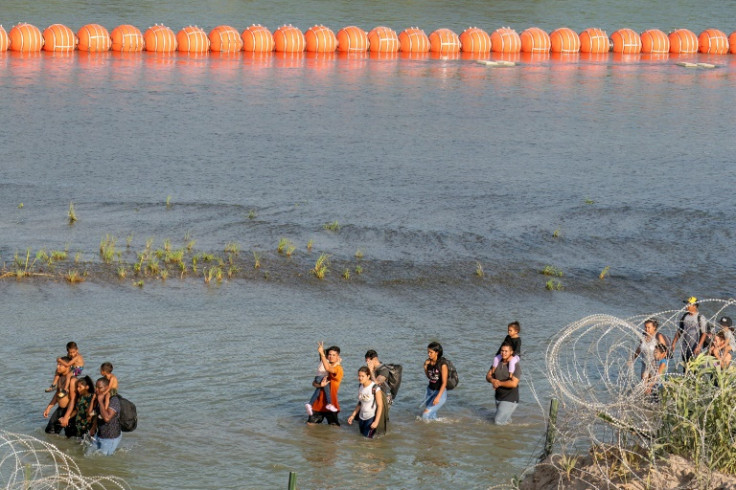
Texas Governor Greg Abbott is seeking to install more buoy barriers along the state's border with Mexico to expand its deterring methods, as he claims they are among the most effective of many such initiatives.
Abbott said the decision has been made, but that his administration is waiting for a court to provide legal backing for the effort. "(We are waiting) on a final decision from the court that has to enforce what the Fifth Circuit already told them to enforce before making that investment," the governor told NewsNation. He added that the cost is "one-tenth" of a border wall's.
Texas authorities created a 1,000-foot-long barrier of buoys in the waters between Eagle Pass and Piedras Negras, Mexico, one of the busiest unlawful migration corridors, for an estimated cost of $850,000.
In July, the appeals court for the 5th U.S. Circuit overturned a previous decision that upheld that of a federal district judge, who determined that the buoys had to be moved following a petition by the Department of Justice. The court unanimously said that the court abused its discretion when granting a preliminary injunction to move the barrier.
However, the broader legal battle is still ongoing, with the Biden administration accusing Texas of violating the federal Rivers and Harbor Act.

The buoys are one of many initiatives carried out by the Abbott administration as part of its Lone Star Operation, aimed at clamping down on unlawful immigration. Others include erecting more concertina wire along migration corridors and bussing people to Democratic-led sanctuary cities up north.
Coupled with the Biden administration's crackdown on unlawful immigration, arrivals to the state have dropped substantially over the year. According to a local official, figures have dropped by 87% compared to its peak.
Mike Banks, Special Advisor on Border Matters under Gov. Greg Abbott said that, as the number of encounters has slowed down, the federal government has opted to temporarily move agents out of Texas to other ports of entry in Arizona, California and New Mexico.
"We're here to say, 'don't try it in Texas,'" Banks said in an interview with News 4 San Antonio. "We're not going to accept illegal entries into the state of Texas. You're going to come legally, or you're not going to come," he added. In fact, figures have dropped so much that Texas has not sent any buses up north in weeks.
The low number of encounters seen lately come as the Biden administration implemented new efforts to reduce unlawful crossings, including an executive order in June that severely restricted asylum claims at the border, as well as increased deportations. While these measures have led to a temporary decline in crossings, the long-term impact remains uncertain as migrants and smugglers adapt to changing policies.
Overall, migrant crossings at the U.S.-Mexico border have reached their lowest levels since President Biden took office, that is according to data from the U.S. Customs and Border Protection (CBP).
The agency reported 56,408 migrant encounters between ports of entry in July, which signifies an 80 percent drop from last December when illegal crossings surged to their highest-ever level.
© 2025 Latin Times. All rights reserved. Do not reproduce without permission.





